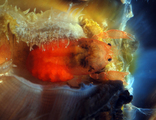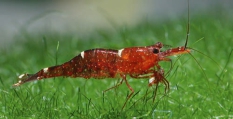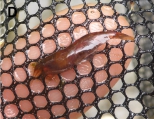Decanet source details
Fetzner, J. W. J.; Taylor, C. A. (2018). Two new species of freshwater crayfish of the genus Faxonius (Decapoda: Cambaridae) from the Ozark Highlands of Arkansas and Missouri. Zootaxa. 4399(4): 491.
291193
10.11646/zootaxa.4399.4.2 [view]
Fetzner, J. W. J.; Taylor, C. A.
2018
Two new species of freshwater crayfish of the genus <i>Faxonius</i> (Decapoda: Cambaridae) from the Ozark Highlands of Arkansas and Missouri
Zootaxa
4399(4): 491
Publication
Available for editors 
Two new species of freshwater crayfish are described from the Ozarks Plateau of northern Arkansas and southern Missouri.
Both species are restricted to the mainstem of rocky streams that are at least fourth-order or greater in size. Recent
genetic and morphological investigations of the coldwater crayfish, Faxonius eupunctus Williams, 1952, indicated that it
was actually composed of several undescribed species. Faxonius eupunctus is herein restricted to just the Eleven Point
River system. Faxonius roberti, new species is found in the mainstem of the Spring and Strawberry river systems in northern
Arkansas. It differs from F. eupunctus by lacking a male Form-I gonopod with a distal spatulate mesial process, and
presence of two spines on the dorsal side of the merus, where F. eupunctus typically has 1 spine. Faxonius wagneri, new
species is known from a 54 mile (86 km) stretch of the Eleven Point River mainstem, ranging from just southeast of Greer,
Missouri to just north of Birdell, Arkansas. Faxonius wagneri can be differentiated from both F. eupunctus and Faxonius
roberti sp. nov. by using the male Form-I and Form-II gonopods, the shape of the chelae, and the female annulus ventralis.
In F. wagneri, the terminal elements of the first pleopod are almost twice as long as those in F. eupunctus and F. roberti,
with the tips of the appendage reaching the posterior base of the first perieopod when the abdomen is flexed forward,
whereas, in the other two species, these elements only reach the base of the second pereiopod. The species also possesses
two spines on the dorsal side of the merus of the first pereiopod, which helps distinguish it from F. eupunctus.
Date
action
by
Faxonius roberti Fetzner & Taylor, 2018 (original description)
Faxonius wagneri Fetzner & Taylor, 2018 (original description)
Faxonius wagneri Fetzner & Taylor, 2018 (original description)



